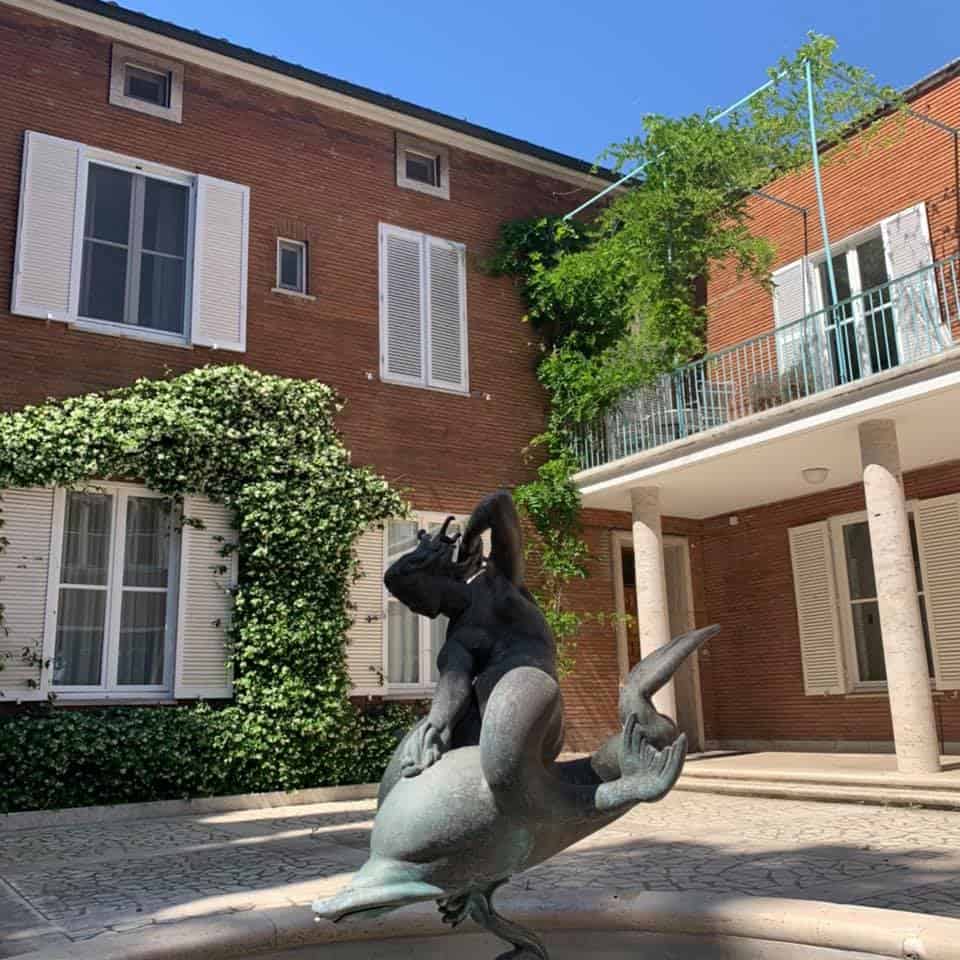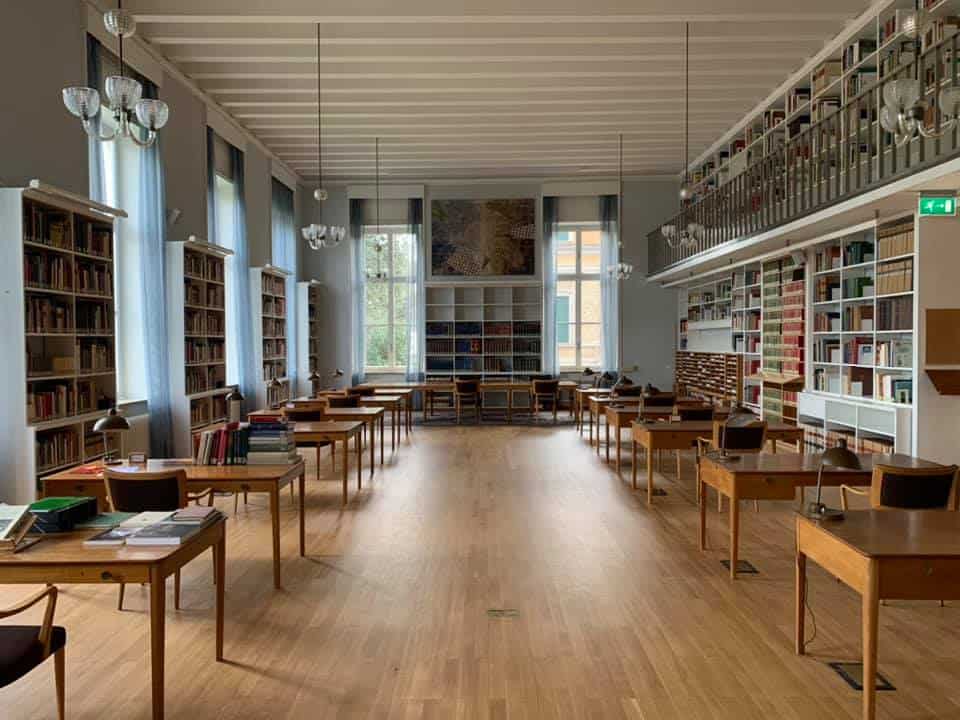Swedish Design and a passion for Mediterranean studies
Founded in 1925, the Swedish Institute in Rome is an authentic hub of classical research. The Istituto di Studi Classici a Roma or Svenska Institutet i Rom originally started out with a small location in Monti but was later given its own building in 1939 in the periphery of Villa Borghese, in Valle Giulia, where it is located today.

The structure was designed by neoclassical Swedish architect Ivar Tengbom while the furnishings and interior design were taken on by notable Swedish furniture designer Carl Mamsten, who focused on minimalist design. In the courtyard resides a fountain with Carl Mille’s sculpture Solglitter, depicting a playful nymph riding atop a dolphin, whose image is also embedded in the Institute’s emblem. The ambition of the designers was to create a modern building in line with the Swedish traditions. The complex is made of an archaeological laboratory, guest rooms and smaller apartments are available to fellows and visiting scholars.

The institute is also known for its extensive library, with around 70,000 books and 200 periodicals dedicated to classical archaeology and Mediterranean topography. Among the special donations made to the institute, it is worth referring to the Bildt Collection dedicated to the literature on Saint Bridget, Queen Christina of Sweden, and to cultural relations between Sweden and Italy.
The institute’s activities focus on archeology and throughout the years’ scholars have been participating in several excavation projects. Between the 60s and the 70s, for instance, the institute was involved in archaeological and investigative work on historical necropolis sites such as Saint Juvenal in the Province of Viterbo and “Pian di Luni”, by the river Mignone in the Comune di Blera. The institute hosts a variety of cultural seminars, exhibitions, concerts, and research presentations.
THE SWEDISH INSTITUTE OF CLASSICAL STUDIES IN ROME
Via Omero, 14
The library is open on appointment (biblio@isvroma.org)





